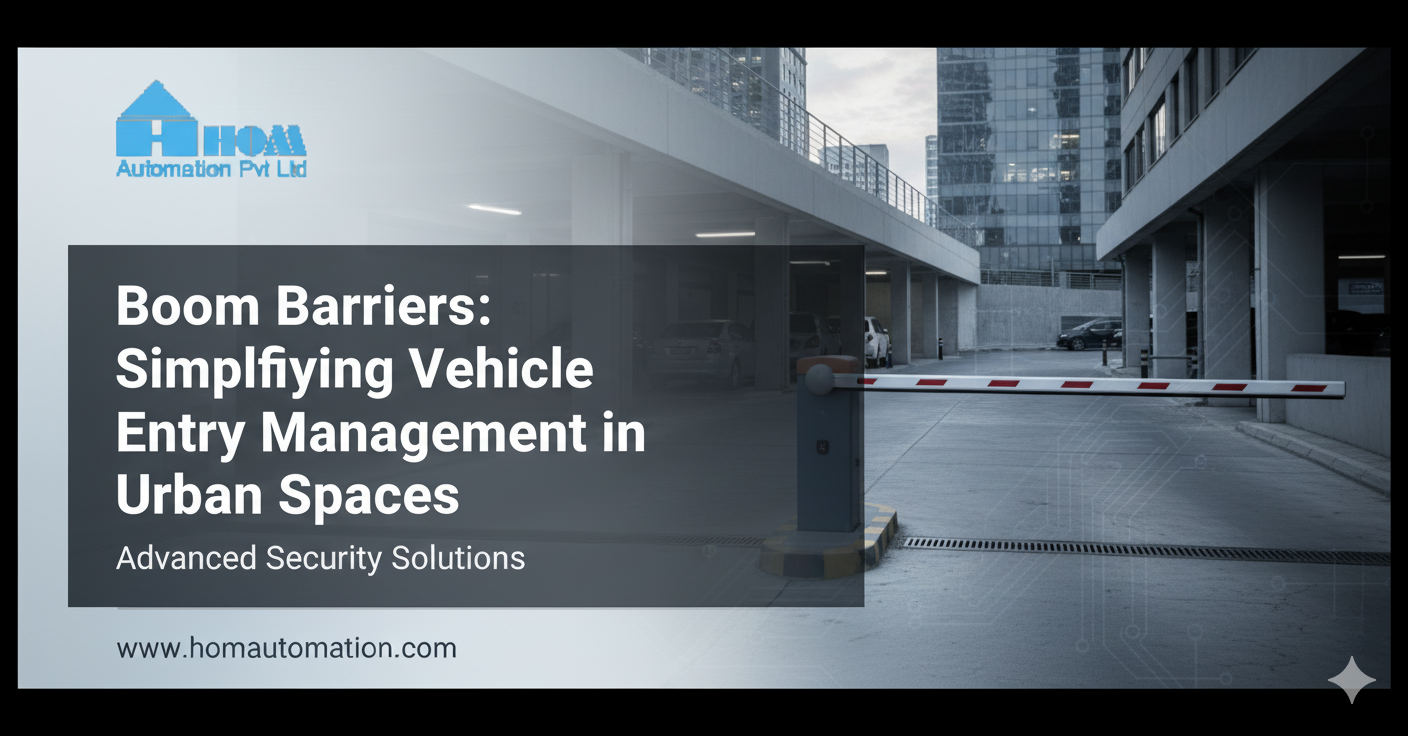In modern cities and commercial complexes, controlling vehicular entry and exit is essential for security, traffic management, and operational efficiency. Boom barriers, also called automatic vehicle barriers, have become a reliable solution for managing access points in parking lots, toll plazas, industrial sites, and gated communities.
These barriers offer a cost-effective, automated, and streamlined method of controlling vehicle movement, reducing congestion while enhancing safety. Let’s explore the types, mechanisms, benefits, and applications of boom barriers in detail.
What is a Boom Barrier?
A boom barrier is a gate consisting of a horizontal bar or pole that pivots to block or allow vehicular access. Controlled either manually or automatically, boom barriers are widely used to regulate traffic flow while ensuring only authorized vehicles gain entry.
Modern boom barriers are often integrated with RFID systems, ticketing software, number plate recognition, and access control devices to automate the process completely. They act as a physical deterrent, preventing unauthorized entry while allowing smooth traffic movement.
Components of a Boom Barrier
- Barrier Arm / Pole: The horizontal bar that physically blocks or allows passage.
- Control Unit / Motor: Operates the barrier automatically via an electric motor or hydraulic system.
- Sensors: Detect vehicles, prevent collisions, and trigger automatic operation.
- Access Control Integration: Interfaces with RFID readers, ticketing systems, or remote control units.
- Indicator Lights: Visual cues for drivers (red = stop, green = go).
- Safety Mechanisms: Auto-reverse or anti-crash features to prevent accidents.
These components ensure the barrier operates efficiently, safely, and reliably in both low- and high-traffic environments.
Types of Boom Barriers
- Manual Boom Barriers
- Operated by a human attendant using a lever or hand control.
- Suitable for low-traffic areas or temporary checkpoints.
- Cost-effective, no electricity required.
- Operated by a human attendant using a lever or hand control.
- Electromechanical / Automatic Boom Barriers
- Operated via an electric motor controlled by a control panel.
- Can integrate with access systems such as RFID, ticketing, or remote control.
- Ideal for medium-traffic parking lots, industrial gates, and commercial complexes.
- Operated via an electric motor controlled by a control panel.
- Hydraulic Boom Barriers
- Use hydraulic mechanisms for smooth and powerful operation.
- Can handle heavy-duty applications like toll plazas, airports, and high-security zones.
- Resistant to frequent operation and harsh weather conditions.
- Use hydraulic mechanisms for smooth and powerful operation.
Applications of Boom Barriers
Boom barriers are versatile and widely used across sectors:
- Parking Lots & Malls: To manage vehicle entry, exit, and automated ticketing.
- Toll Plazas: Facilitate automated toll collection while controlling traffic flow.
- Industrial & Commercial Gates: Ensure only authorized personnel and vehicles enter the premises.
- Residential Societies: Enhance security and monitor resident and visitor vehicles.
- Airports & Ports: Protect restricted zones and cargo handling areas.
- Government & Defense Facilities: Provide robust vehicle access control to sensitive locations.
By controlling entry efficiently, boom barriers help reduce congestion, enhance security, and improve operational management.
Benefits of Installing Boom Barriers
1. Efficient Traffic Management
Automated barriers streamline vehicle flow, reduce queues, and prevent bottlenecks at entry and exit points.
2. Enhanced Security
They act as a physical deterrent against unauthorized vehicles and can be integrated with access control systems to permit only authorized entry.
3. Automated Operation
Modern systems can operate 24/7 automatically, reducing the need for manual attendants and minimizing human error.
4. Integration with Smart Access Systems
Boom barriers work seamlessly with RFID readers, ticketing software, ANPR systems, and centralized control units, enabling data-driven traffic and security management.
5. Safety Features
Equipped with sensors and anti-crash mechanisms, boom barriers prevent collisions, reverse on obstruction detection, and operate safely in high-traffic zones.
6. Cost-Effective
Compared to the costs associated with manual security and unauthorized access, boom barriers provide a low-maintenance, long-term solution.
7. Customizable Design
Barriers can be configured for length, speed of operation, arm type (straight or folding), and aesthetic preferences to fit urban or industrial environments.
How Boom Barriers Work
- A vehicle approaches the barrier.
- The system detects the vehicle using sensors or access credentials.
- If authorized, the barrier arm lifts to allow entry.
- Once the vehicle passes, the arm automatically lowers, ready for the next vehicle.
- Unauthorized vehicles are blocked, and an alarm or indicator may activate to alert security personnel.
The combination of mechanical reliability and digital control ensures smooth, efficient, and secure vehicle management.
Boom Barrier vs. Spike Tyre Killer
| Feature | Boom Barrier | Spike Tyre Killer |
| Purpose | Vehicle access control | Vehicle intrusion prevention |
| Operation | Gentle lifting & lowering | Physical tyre puncture |
| Integration | Access control & automation | Access control optional |
| Traffic Flow | Smooth and fast | Immediate stop of vehicles |
| Safety | High, non-destructive | Dangerous if misused |
While spike tyre killers prevent unauthorized access forcefully, boom barriers offer a safe and convenient solution for regulated vehicle flow. Often, both systems are integrated for maximum security at high-risk sites.
Maintenance Tips for Boom Barriers
- Regular inspection of motor and control unit to prevent malfunction.
- Clean and lubricate moving parts periodically for smooth operation.
- Check sensors and safety mechanisms to ensure proper functionality.
- Test emergency release mechanisms to prepare for power outages or emergencies.
- Replace worn-out barrier arms to avoid damage and maintain aesthetics.
Proper maintenance ensures long-term reliability and uninterrupted security.
Future Trends in Boom Barrier Technology
With the rise of smart cities and automated traffic systems, boom barriers are evolving:
- IoT Integration: Remote monitoring and control via cloud platforms.
- AI-Powered Access: Predictive traffic management and anomaly detection.
- Solar-Powered Systems: Energy-efficient operation for outdoor installations.
- Smart City Integration: Linked with traffic lights, cameras, and access control networks for optimized urban vehicle flow.
These innovations make boom barriers not only a security device but also a smart traffic management tool.
Conclusion
Boom barriers are a cornerstone of modern vehicle access management, offering security, automation, and efficiency in one package. Whether installed in parking facilities, toll plazas, industrial gates, or residential complexes, they streamline vehicle flow, enhance safety, and reduce the need for manual monitoring.
By adopting boom barriers, organizations and municipalities can maintain orderly access, protect assets, and optimize operational efficiency, making them indispensable in today’s urban and industrial landscapes.






